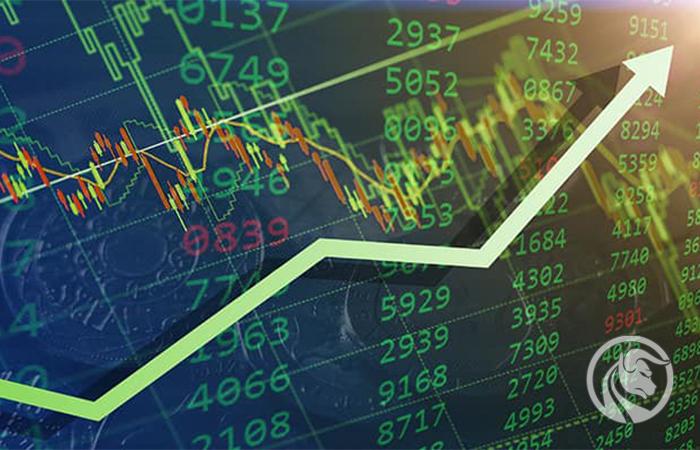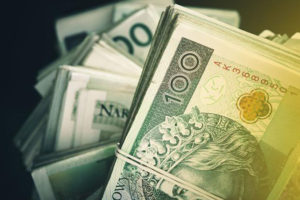Next week's economic highlights (January 30 - February 3)
At the top of the list of key economic events are three interest rate decisions, where the US Federal Reserve, the Bank of England and the European Central Bank are to raise interest rates. Then, Friday's non-farm payrolls report will show whether the world's largest economy added fewer jobs in January than it did in December. It will probably be an emotional week.
MAJOR ECONOMIC EVENTS (JANUARY 30 - FEBRUARY 3):
Monday, January 30
-
- No significant announcements
Tuesday, January 31
-
- No relevant announcements
Wednesday, February 1
-
- US Federal Reserve decision on interest rates
While Federal Reserve will raise interest rates? In December, the Fed raised interest rates by half a percentage point, ending a series of four consecutive increases of 0,75 percentage points and bringing the federal funds rate to its target range of 4,25%-4,5%. Currently, policy makers seem to be divided on whether to raise rates by another 0,5 percentage point or limit themselves to a quarter point increase.
Meanwhile, markets still expect rates to fall in 2023. As it stands, markets are pricing in at least half a percentage point of rate cuts this year, which seems optimistic, especially with unemployment at 3,5%, which is the lowest in 50 years. Apparently, something will have to change in the coming months.
Most observers expect the Fed to raise rates by 0,25 percentage points on Wednesday. Patrick Harker of the Philadelphia Fed and Lori Logan of the Dallas Fed who are voting members Federal Open Market Committee (FOMC) stated that they wouldn't mind a quarter-point raise. Christopher Waller, who previously advocated more aggressive rate hikes, is also on the side of this opinion. This suggests that there may be a growing group of FOMC members who support a slowdown in rate hikes.
With markets expecting the final rate to be lower than the Fed's target of 5% or higher, and financial conditions relaxing, there is a risk that inflation could become more problematic in the coming months unless the Fed resets expectations. They could do it in many ways. One way is to raise rates by 0,5 percentage points on February 1, which would push the upper end of the fed funds target range to 5%. Another approach could be a 0,25 percentage point hike, but with hawkish guidance that will let the markets know that more hikes will follow and that rates will stay high for some time.
Thursday, February 2
-
- Bank of England interest rate decision
Bank of England faces a dilemma after it raised its key interest rate by 0,5 percentage point to 3,5% in December. Some members of the Monetary Policy Committee (MPC), such as Catherine Mann, are likely to push for a further half-percentage point hike to address rising prices. Inflation is still in the double digits and the UK economy has proven a bit more resilient in the face of higher rates than some may have feared, with GDP rising 0,1% month-on-month in November. While the recent reduction in energy prices has helped ease inflationary pressures, with food price inflation still at 16%, The bank will not want to give the impression that it is giving way in the fight against inflation.
However, some MPC members may be tempted to raise the cost of credit by 0,25 percentage points, citing known concerns about the impact of higher rates on mortgage payers. These fears may be a bit exaggerated as bond yields, which help shape the cost of mortgages, have barely changed from November's low for five-year bonds, although two-year bond yields have increased. In any case, this camp may include outside MPC members Silvana Tenreyro and Swati Dhingra, who voted to keep the key interest rate unchanged in December.
Regardless of whether committee members raise interest rates by 0,25 or 0,5 percentage points on Thursday, the decision in the vote will probably be divided.
-
- Decision of the European Central Bank on interest rates
Most likely on Thursday EBC will raise interest rates by another 0,5 percentage point. Several members of the Governing Council have advocated raising rates by half a percentage point multiple times over the coming months, and ECB President Christine Lagarde, speaking at the World Economic Forum in Davos in January, pledged to "stay the course" on rate hikes until inflation returns will return to the ECB's target of 2%.
Last year, the ECB raised interest rates by a total of 2,5 percentage points to curb price spikes, though it slowed the pace of the December hike to 0,5 points from 0,75 points in November. However, members of the Governing Council who wanted another 0,75 point hike in December did not necessarily become less hawkish, even as eurozone inflation fell below 10%.
At the December meeting, Lagarde signaled that there were plans three consecutive half-point rate hikeswhich resulted in an increase in the exchange rate of the euro. However, markets do not seem convinced the ECB will follow through on its guidelines, given the risks that rising borrowing costs could bring to more indebted members of the bloc, such as Greece, Italy and Portugal.
Friday, February 3
-
- US Employment Report (January)
So far, there isn't much evidence of a slowdown in the US labor market, with weekly jobless claims falling below 200 this month. In December payrolls 223 were recorded new jobs, and the unemployment rate fell to 3,5% from 3,6%. For those less hawkish, average hourly earnings fell short of expectations, rising 4,6%, while November figures were revised down from 5,1% to 4,8%, easing concerns about upward pressure place.
The market still seems to be getting complacent about the pace of the Federal Reserve's interest rate changes, but while the unemployment rate remains at a multi-year low, the US central bank has little incentive to cut rates as inflation continues remains almost 3 times higher than the target 2%. January payrolls are expected to be 175. people, and the unemployment rate will increase to 3,6%.






















![Forex Club – Tax 9 – Settle tax on a foreign broker [Download the Application] Forex Club - Tax 9](https://forexclub.pl/wp-content/uploads/2024/02/Forex-Club-Podatek-9-184x120.jpg?v=1709046278)
![Trading View platform – solutions tailored to the needs of traders [Review] trading view review](https://forexclub.pl/wp-content/uploads/2024/03/trading-view-recenzja-184x120.jpg?v=1709558918)
![How to connect your FP Markets account to the Trading View platform [Guide] fp markets trading view](https://forexclub.pl/wp-content/uploads/2024/02/fp-markets-trading-view-184x120.jpg?v=1708677291)
![How to invest in ChatGPT and AI? Stocks and ETFs [Guide] how to invest in chatgpt and artificial intelligence](https://forexclub.pl/wp-content/uploads/2023/02/jak-inwestowac-w-chatgpt-i-sztuczna-inteligencje-184x120.jpg?v=1676364263)


![WeWork – the anatomy of the collapse of a company valued at $47 billion [WeWork, part II] wework bankruptcy story](https://forexclub.pl/wp-content/uploads/2024/04/wework-bankructwo-historia-184x120.jpg?v=1711729561)
![Adam Neumann – the man who screwed up Softbank [WeWork, part AND] adam neumann wework](https://forexclub.pl/wp-content/uploads/2024/04/adam-neumann-wework-184x120.jpg?v=1711728724)





![How to transfer shares to another brokerage office [Procedure description] how to transfer shares to another brokerage house](https://forexclub.pl/wp-content/uploads/2024/03/jak-przeniesc-akcje-do-innego-biura-maklerskiego-184x120.jpg?v=1709556924)

![The most common mistakes of a beginner trader - Mr Yogi [VIDEO] Scalping - The most common mistakes of a beginner trader - VIDEO](https://forexclub.pl/wp-content/uploads/2024/03/Scalping-Najczestsze-bledy-poczatkujacego-tradera-VIDEO-184x120.jpg?v=1711601376)
![Learning patience: No position is also a position - Mr Yogi [VIDEO] Scalping - Learning patience - No position is also a position - VIDEO](https://forexclub.pl/wp-content/uploads/2024/03/Scalping-Nauka-cierpliwosci-Brak-pozycji-to-tez-pozycja-VIDEO-184x120.jpg?v=1710999249)
![When to exit a position and how to minimize losses - Mr Yogi [VIDEO] Scalping - When to exit a position and how to minimize losses - VIDEO](https://forexclub.pl/wp-content/uploads/2024/03/Scalping-Kiedy-wyjsc-z-pozycji-i-jak-minimalizowac-straty-VIDEO-184x120.jpg?v=1710336731)

















